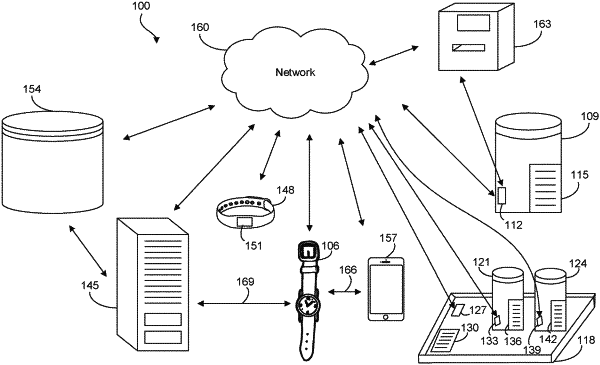| CPC G08B 21/24 (2013.01) [G08B 6/00 (2013.01)] | 20 Claims |

|
1. A condition-responsive wearable device, comprising:
at least one processor;
a sensor configured to:
detect an article with a plurality of information sources within a predetermined distance of the sensor, the information sources providing first characteristic information and second characteristic information associated with the article; and
detect the first characteristic information from a first information source among the plurality of information sources;
a second sensor configured to:
detect the article with the plurality of information sources within a predetermined distance of the second sensor: and
detect the second characteristic information from a second information source among the plurality of information sources;
an input component configured to receive an input from a user; and
a memory storing instructions that, when executed by the at least one processor, cause the at least one processor to:
receive third characteristic information from the input component;
select fourth characteristic information from among the first and second characteristic information;
compare the third and fourth characteristic information; and
selectively generate an alarm, based on the comparison.
|